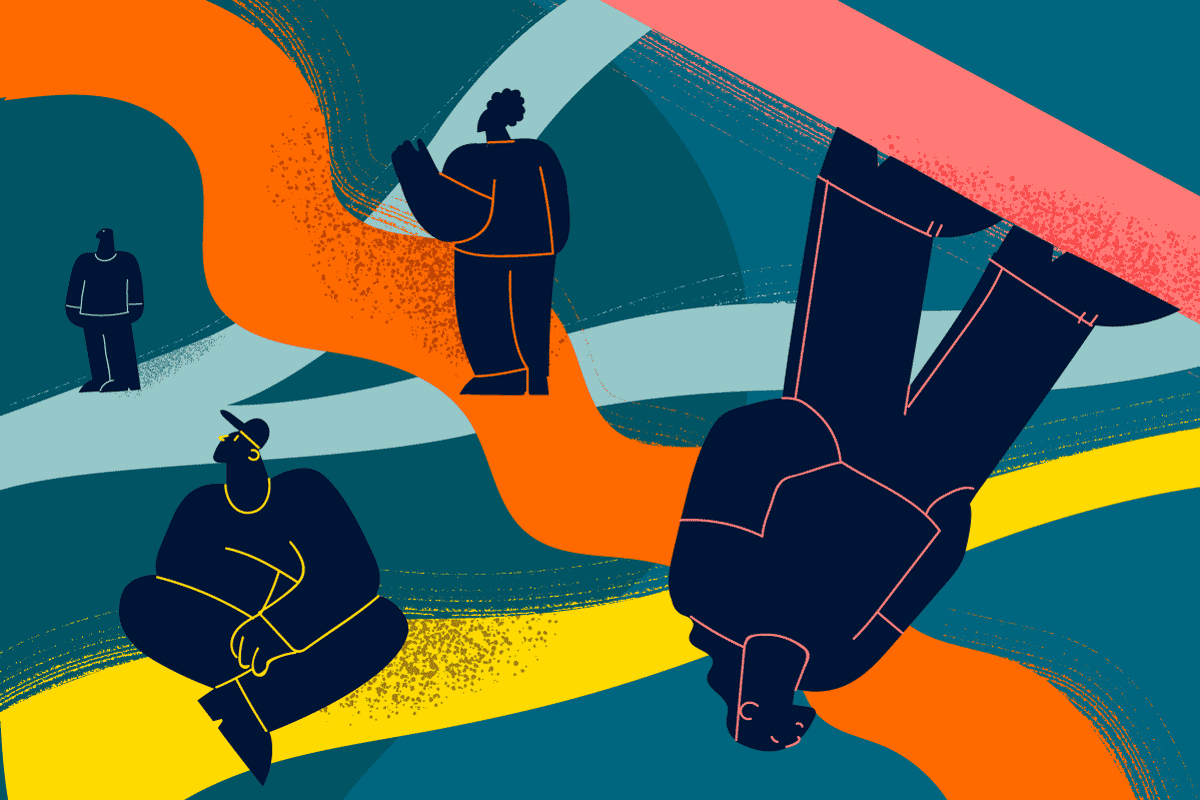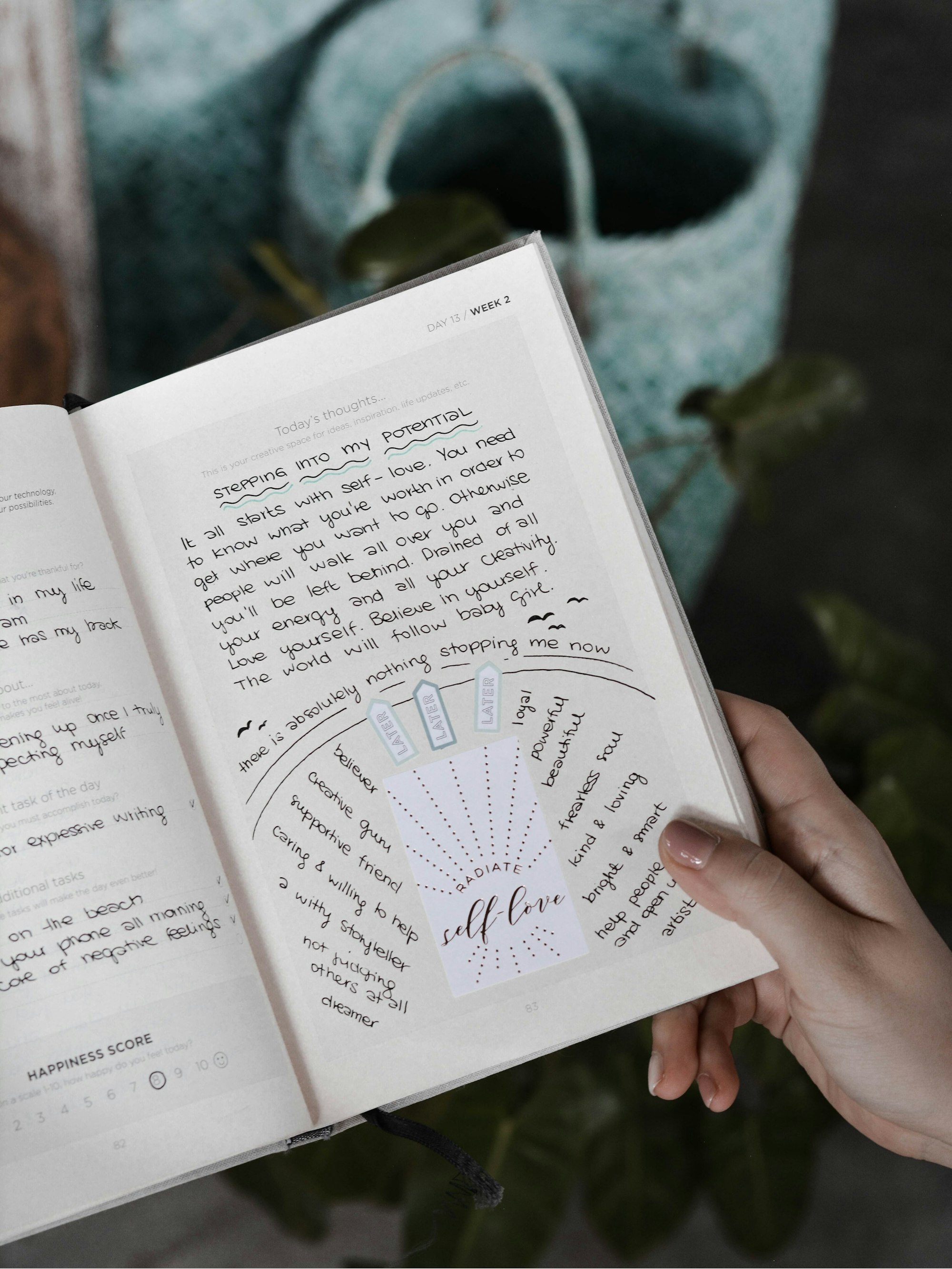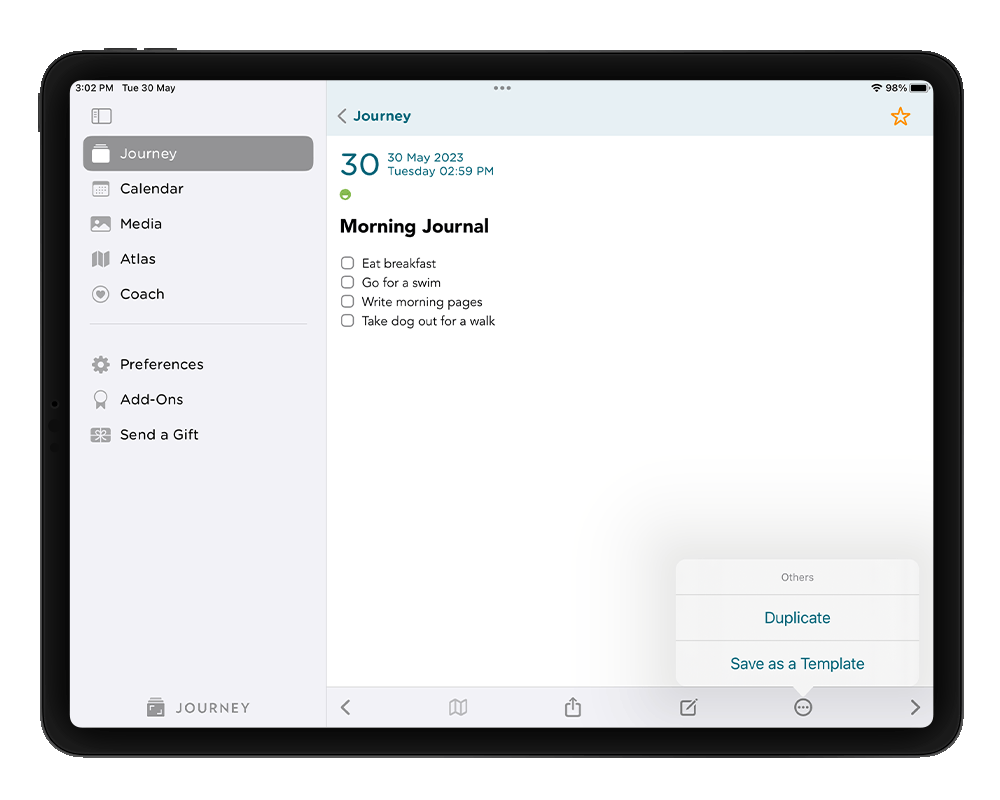Decision Journal - How To Journal Your Way To Better Decision-making
Having good decision-making abilities and being able to make thoughtful, informed choices is important. Decision journals can help you identify patterns, track trends, and recognize your decision-making strengths and weaknesses. Read on to find out more about how you can start one of your own!

Life is a journey paved with countless decisions, big and small, that shape our paths and lead us to new horizons. Whether it's choosing a career path, making personal commitments, or tackling everyday challenges, our decisions play a significant role in defining who we are and where we're headed.
But how often do we pause to reflect on the choices we make? How do we ensure we're making the best decisions for our well-being and personal growth?
Decision journaling is a powerful tool that empowers us to become more intentional, self-aware, and effective decision-makers. A decision journal is a reflective practice that involves documenting our decision-making process, exploring alternatives, and analyzing the outcomes of our choices. By putting pen to paper (or fingers to the keyboard), we unlock the secrets of our minds and embark on a journey of self-discovery that can lead to wiser, more fulfilling choices.
Read on to find out more about what a decision journal is and why you should most definitely start one!

What is a Decision Journal?
A decision journal, also known as a choice journal or a reflective journal, is a tool used to document and analyze the decision-making process. It serves as a written record of the decisions you make, the factors considered, the options evaluated, and the outcomes experienced. The primary purpose of a decision journal is to enhance decision-making skills by promoting self-awareness, learning from past choices, and improving future decisions.
By consistently maintaining a decision journal, individuals can identify patterns, track trends, and recognize their decision-making strengths and weaknesses. It can also be a helpful resource for evaluating long-term consequences and learning from both successful and unsuccessful decisions. Over time, this reflective practice can lead to improved decision-making abilities and more thoughtful, informed choices.
What makes up a Decision Journal?
The typical components of a decision journal may include:
1. Decision details
A record of the date, time, and context of the decision-making situation.
2. Decision criteria
A list of the key factors or criteria that are relevant to the decision. These could be practical, emotional, financial, ethical, or any other considerations that influence your choices.
3. Alternatives
Documenting the various options or choices available to you. Include both the ones you considered and the ones you rejected.
4. Pros and cons of your possible decision
Having analyzed the advantages and disadvantages of each alternative. Writing down these steps helps you understand the potential outcomes and consequences of your choices.
5. Decision rationale
Writing and explaining the reasons behind your final decision. This can help you understand your thought process and identify potential biases or cognitive traps.
6. Emotional state
Noting down your emotions and feelings related to the decision. Emotions can play a significant role in decision-making, and being aware of them can help you manage their impact on your choices.
7. Decision outcome
A record of the actual results of the decision. This can provide valuable feedback on the effectiveness of your decision-making process.

8 Benefits of Keeping a Decision Journal
Having a decision journal is a powerful tool for continuous learning and self-improvement. It empowers individuals to make more informed choices, reduce impulsive decision-making, and ultimately lead to a more successful and fulfilling life. Keeping a decision journal can offer numerous benefits that can positively impact both personal and professional aspects of life. Here are some of the key advantages of maintaining a decision journal:
1. Improved decision-making - First and foremost, by documenting your decision-making process, you can gain a better understanding of your thinking patterns, biases, and tendencies. This self-awareness can lead to more thoughtful and rational choices in the future.
2. Learn from past experiences - Reviewing past decisions and their outcomes allows you to identify what worked well and what didn't. This retrospective analysis helps you learn from mistakes and successes, increasing your ability to make better decisions in similar situations.
3. Reduction of cognitive biases - Decision journals can help you recognize cognitive biases and emotional influences that may cloud your judgment. With awareness, you can take steps to mitigate these biases and make more objective choices.

4. Increased accountability - Knowing that you will be documenting your decisions may encourage you to be more accountable for the choices you make. This can lead to more responsible decision-making and a greater focus on long-term consequences.
5. Clarity and organization - Writing down the factors, criteria, and alternatives related to a decision can help organize your thoughts and streamline the decision-making process. This clarity can prevent information overload and reduce the likelihood of decision paralysis.
6. Goal tracking - Decision journals can be integrated with goal-setting activities. By documenting decisions related to specific objectives, you can track your progress and adjust your approach as needed to achieve your goals.
7. Enhanced problem-solving skills - Regularly analyzing decisions fosters critical thinking and problem-solving abilities. It encourages you to consider multiple perspectives and evaluate options thoroughly.
8. Stress reduction - The act of journaling itself can serve as a stress-relieving practice. It allows you to vent emotions, acknowledge uncertainties, and approach complex situations with a calmer mindset.
How To Start a Decision Journal
1. Select an appropriate medium
Spend some time deciding whether you prefer to keep your decision journal in a physical notebook or an electronic format. Both options have their advantages, so choose the one that feels more convenient and accessible to you. Different mediums offer different features and capabilities. A physical notebook might provide a more tactile and personalized experience, while an electronic format allows for easy organization, searchability, and the ability to add multimedia elements. Choose a medium that aligns with your preferences and allows you to express your thoughts effectively.
Digital journals often provide organizational tools such as tags, folders, or categories, making it easier to categorize and search for specific entries. This can be especially helpful when you want to review past decisions and analyze trends. You might also prefer a digital journal that integrates with other productivity tools or apps you already use. This can streamline your decision-making process and make it more efficient.

If you're looking for a digital platform to start journaling, Journey would be a perfect option for you. Journey has all the tools that you would require to take you through starting a decision journal and making good and informed decisions with the power of reflecting. With decision journal templates, coupled with many other tools that can supplement your journaling, such as a well-equipped editor that you can add task lists, tables, bullet points, and numbered lists to help you plan your time, and being able to access your journal from anywhere and anytime with Cloud Sync, writing in it is made all the more efficient.
Consider your lifestyle and your schedule as well before deciding. The medium you choose should be easily accessible and convenient for you to use regularly. If it's cumbersome or inconvenient, you may be less inclined to keep up with journaling. Whether it's a physical notebook or an electronic format, it should be something that fits into your daily routine seamlessly.
2. Set a purpose
By defining the purpose of your decision journal, you gain clarity on what you hope to achieve through the practice. This clarity helps you stay focused and ensures that your journaling efforts align with your goals.
Having a clear purpose provides motivation and a sense of purpose for maintaining a decision journal. When you understand the benefits you seek to gain from journaling, you are more likely to stay committed to the practice over the long term. A purpose also reminds you of the importance of reflecting on your decisions. It holds you accountable for examining your choices and learning from them. Regularly revisiting your purpose can reignite your commitment to self-improvement and ensure that your decision journal remains a valuable tool for growth.
Spend time clarifying your objectives for maintaining a decision journal. Identify what you want to achieve, such as improving decision-making, learning from past choices, or achieving specific goals.
3. Create or use a template
Consider using or even designing a simple template to guide your journal entries. This can help ensure consistency in the information you record. Include sections for decision details, criteria, alternatives, pros and cons, rationale, emotional state, and outcomes. You can then use this template again without having to start from scratch, saving you time.

On Journey, with the " Custom Templates" plugin, you can create your very own templates and tailor your journaling experience to suit your specific needs and preferences. You can design templates that resonate with your unique goals, challenges, and areas of focus, such as making a decision-making template.
4. Choose a writing schedule
Decide how frequently you'll write in your decision journal. It could be after each significant decision, once a day, or a few times a week, depending on your decision-making frequency.
Establishing a regular writing schedule ensures that you consistently engage with your decision journal. Consistency is key to reaping the full benefits of the journaling practice. It allows you to build a comprehensive record of your decisions over time, facilitating better analysis and learning. Setting a writing schedule helps you develop a habit of journaling. Once journaling becomes a routine part of your day or week, it becomes easier to maintain. Over time, this habit will become ingrained, making it more likely that you'll continue journaling in the long run.
Consistent journaling maintains momentum in your self-improvement journey. It keeps you engaged in the process of self-reflection and learning, ensuring that you continue to grow and develop as a decision-maker. Journaling soon after making a decision also allows for more accurate and detailed reflections. Your memory of the decision-making process and the emotions involved will be fresher, leading to more meaningful insights and analysis.

5. Record the decision context
Start each entry by providing context for the decision. Include the date, time, and any relevant information about the situation you are facing.
Documenting the decision context provides a clear picture of the situation in which the decision was made. It includes relevant details such as the date, time, location, people involved, and any other pertinent information. This comprehensive understanding helps you recall the circumstances accurately when you review the decision in the future. Recording the decision context also allows you to approach your journaling with a more objective mindset. By capturing the facts and details surrounding the decision, you can minimize the influence of hindsight bias or selective memory, which might cloud your judgment during the reflection process.
The context of a decision often includes external factors or events that may have had an impact on your thought process and choices. By noting these factors, you can better recognize their influence on your decision-making and analyze how they contributed to the outcome.
As you accumulate entries in your decision journal, you'll have a wealth of real-life scenarios to draw from for future reference. The decision context serves as a foundation for comparing and contrasting similar situations, identifying patterns, and learning from past experiences.
6. List decision criteria
By listing the decision criteria, you define the specific factors and considerations that are relevant to the decision at hand. This provides clarity on what aspects are essential to your decision-making process. Decision criteria then act as a structured framework for evaluating alternatives. When you have a clear set of criteria, you can assess each option methodically, ensuring a more comprehensive analysis.
Listing decision criteria promotes consistency in how you approach decisions. By using the same set of criteria for similar types of choices, you reduce the risk of making contradictory or haphazard decisions. Decision criteria often have varying degrees of importance. By listing them explicitly, you can prioritize the criteria based on their significance, which assists in ranking alternatives effectively.
7. Document possible alternatives
By listing multiple alternatives, you ensure that you consider a wide range of options before making a decision. This comprehensive analysis helps you explore different possibilities and evaluate their potential outcomes.
When you have a list of alternatives, you prevent yourself from fixating on a single option too early in the decision-making process. It encourages you to keep an open mind and explore various avenues before settling on a choice. Without a list of alternatives, you might be tempted to go with the first option that comes to mind, leading to hasty decisions. By listing several alternatives, you give yourself time to weigh the pros and cons and make a more considered choice.

Having multiple alternatives allows you to compare trade-offs more effectively. You can assess the advantages and disadvantages of each option, helping you make a decision that aligns with your priorities and values. Comparing alternatives also helps you identify any dominant options—those that clearly outperform the others in most criteria. These dominant options can become strong contenders for your final decision.
8. Analyze pros and cons
Listing the pros and cons of each alternative allows for a balanced evaluation of the options. It ensures that you consider both the positive and negative aspects, helping you avoid overly optimistic or pessimistic views of the choices. By thoroughly analyzing the pros and cons, you gain a deeper understanding of the potential outcomes and consequences of each option. This informed perspective empowers you to make more thoughtful and rational decisions.
Analyzing the pros and cons helps mitigate cognitive biases and emotional influences that may affect your judgment. It encourages a more objective and evidence-based approach to decision-making. Decision journaling is not only about the current decision but also about learning from past experiences. Analyzing the pros and cons allows you to identify patterns and trends in your decision-making, providing valuable insights for future choices.
9. Explain your decision rationale
Writing out your decision rationale helps you articulate your thinking process and the reasoning behind your choice. It clarifies your thoughts and ensures that you can clearly express why you made a particular decision. Explaining your decision rationale fosters self-awareness. It allows you to understand your motivations, values, and priorities that influenced the decision. This self-awareness can lead to personal growth and a deeper understanding of your decision-making patterns.
Writing out your decision rationale encourages critical thinking and problem-solving skills. It prompts you to consider various aspects of the decision, weigh different factors, and arrive at a well-reasoned conclusion**.** When you explain your decision rationale, you are more likely to recognize any cognitive biases that may have influenced your choices. Awareness of these biases can help you make more objective decisions in the future.
10. Document your emotional state
Take note of your feelings and emotions related to the decision. Emotions can play a significant role in decision-making, and being aware of them can help you manage their impact on your choices. Recording your emotional state at the time of making a decision helps you become aware of how your feelings might be influencing your choices. Emotions can impact decision-making, and being conscious of them allows you to make more rational and balanced decisions.
Over time, tracking your emotional states in various decision scenarios can reveal patterns. You might identify specific emotions that tend to recur in certain types of decisions. This awareness helps you recognize potential biases or tendencies in your decision-making process.

By tracking your emotional state alongside your decisions, you may recognize specific triggers that consistently evoke certain emotions. This self-awareness helps you proactively address these triggers and avoid impulsive decision-making. Taking time to reflect on past decisions and emotional states can help you learn how certain emotions impacted your choices. It allows you to evaluate whether your emotions were justified or if they clouded your judgment.
Remember, emotional states can be valuable signals, often referred to as "gut feelings" or intuition. Documenting your emotions allows you to validate or question these instincts in hindsight. This can enhance your trust in your intuition or help you refine it.
11. Record the decision outcome
Documenting the decision outcome provides closure to the decision-making process. It marks the conclusion of the decision and allows you to move forward with confidence, knowing the result of your choice. Recording the decision outcome allows you to learn from your experiences. By comparing the actual outcome to your expectations or predictions, you can identify areas where your decision-making process was accurate or where improvements can be made.
Tracking the decision outcome encourages accountability for your choices. It reminds you to reflect on the consequences of your decisions and take responsibility for their impact, whether positive or negative.
Decision journaling with recorded outcomes enables you to evaluate the long-term consequences of your choices. This perspective helps you make decisions that align with your broader goals and values. Over time, your decision journal also becomes a valuable database of past decisions and their outcomes. It serves as a knowledge base for future reference, providing insights and lessons that can inform new choices.
Example of a Decision Journal
With the elements discussed above, a possible entry in a decision journal can look like the following:
1. Date of decision-making: 19th July 2023
2. Decision details: Today, I would like to take some time to decide if I would want to give up eating fast food. I need to consider my tight work schedule that leads me to get quick meals on the go. Recently, I have been having a few health scares that is motivating me to make better lifestyle choices and better dietary choices.
3. Decision Criteria
- Health - Not consuming fast food would have good effects on my health.
- Saving money from eating out - Deciding not to consume fast food anymore would allow me to spend less on take-out henceforth. This would save me some money.
- Spending more time at home - Not eating fast food anymore would push me to make more meals at home and learn how to cook. This would be another activity that I could do with my family as well.
4. Alternatives to my decision
- Look out for healthier options outside if I have to order take-out or eat out
- Meal prep on the weekends so that I have food prepared for the week
- Continue to eat fast food out of convenience and time constraints
5. Pros and Cons
- Pros - Improved health, weight loss, cholesterol levels being decreased, saving money, potential interest in cooking being picked up as a result.
- Cons - Spending more time cooking or prepping meals, missing out on my favorite fast-food comfort foods, not having the convenience of grabbing a quick meal.
6. Decision Rationale
- I believe this decision will lead to better health, being able to save money, being encouraged to spend more time at home to cook.
- Why I believe this decision will pan out this way: I believe that I already know that the decision to not consume fast food anymore would be beneficial to my health and well-being, and that I will be able to phase it out.
7. Emotional State - Excitement, nervous, motivated
8. Final Decision Outcome - By 26th July 2023
This is just an example of how a decision journal entry might be structured. In a real decision journal, you would continue to track the outcome of your decision, assess its impact, and use this reflective practice to inform future choices and personal growth.
In the ever-changing landscape of life, decision-making is an art that influences the trajectory of our journey. Embracing the power of decision journaling empowers us to embark on a transformative path of self-awareness, growth, and wisdom. A decision journal serves as an invaluable companion, guiding us through the complexities of choices, offering clarity amidst uncertainty, and illuminating the path to a fulfilling life.

Let us remember that decision journaling is not just about the decisions themselves; it is a journey of self-discovery, a celebration of growth, and a testament to the power of reflection. It instills in us the courage to confront uncertainties, the humility to learn from our mistakes, and the resilience to navigate the crossroads of life with grace.
Happy journaling, and may your journey be one of self-discovery, growth, and empowered decisions!


